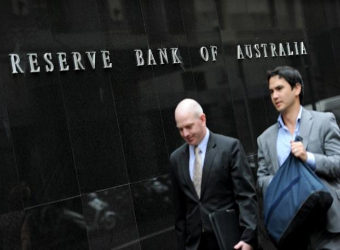Australia’s central bank held interest rates steady as a recent slide in the Australian dollar toward three year lows helped relieve pressure on the nation’s exporters.
The decision, which left the cash rate at a record-low 2.5% for the fourth-straight month, comes against a growing body of evidence that the central bank’s strategy of “rebalancing” the economy as a long resources boom slows is working. Sectors from housing construction through to credit growth and business confidence have gathered pace in recent times.
Still, the central bank reiterated that it was looking for stronger signs a recovery in nonmining industries was more than a blip before it would be prepared to shift rates.
“Further ahead, private demand outside the mining sector is expected to increase at a faster pace, though considerable uncertainty surrounds this outlook,” Glenn Stevens, the central bank’s governor, said Tuesday, echoing the same cautiousness that accompanied last month’s statement. “There has been an improvement in indicators of household and business sentiment recently, but it is still unclear how persistent this will be.”
The central bank has cuts eight times in the last two years to help an economy suffering because of lower global commodity prices. Australia’s biggest trading partner, China, experienced a slowdown last year that hurt commodity prices and prompted mining firms to cut back investment in new projects, leading to thousands of job losses.
Official figures due Wednesday are expected to show the resource-rich economy grew by 2.6% in the year through September, much slower than quarterly growth rates as high as 4% last year, according to economists surveyed ahead of the release.
In keeping rates low, the central bank has been mindful of further pushing up house prices, which recently surpassed a 2010 peak. That has left policymakers with few options to aid the slowing economy other than talking the currency down.
Gov. Stevens last month said he was “open-minded” about the idea of central bank intervention to bring down the level of the local dollar, although his deputy Philip Lowe later said the threshold for intervention–in which the RBA would actively sell the Aussie dollar and buy foreign currency–was still “fairly high.”
The Australian dollar is down about 12% against the U.S. dollar so far this year and came close to a three-year low last month following Mr. Stevens’ comments, helping the competitiveness of Australia’s manufactured exports.
Source: Marketwatch
